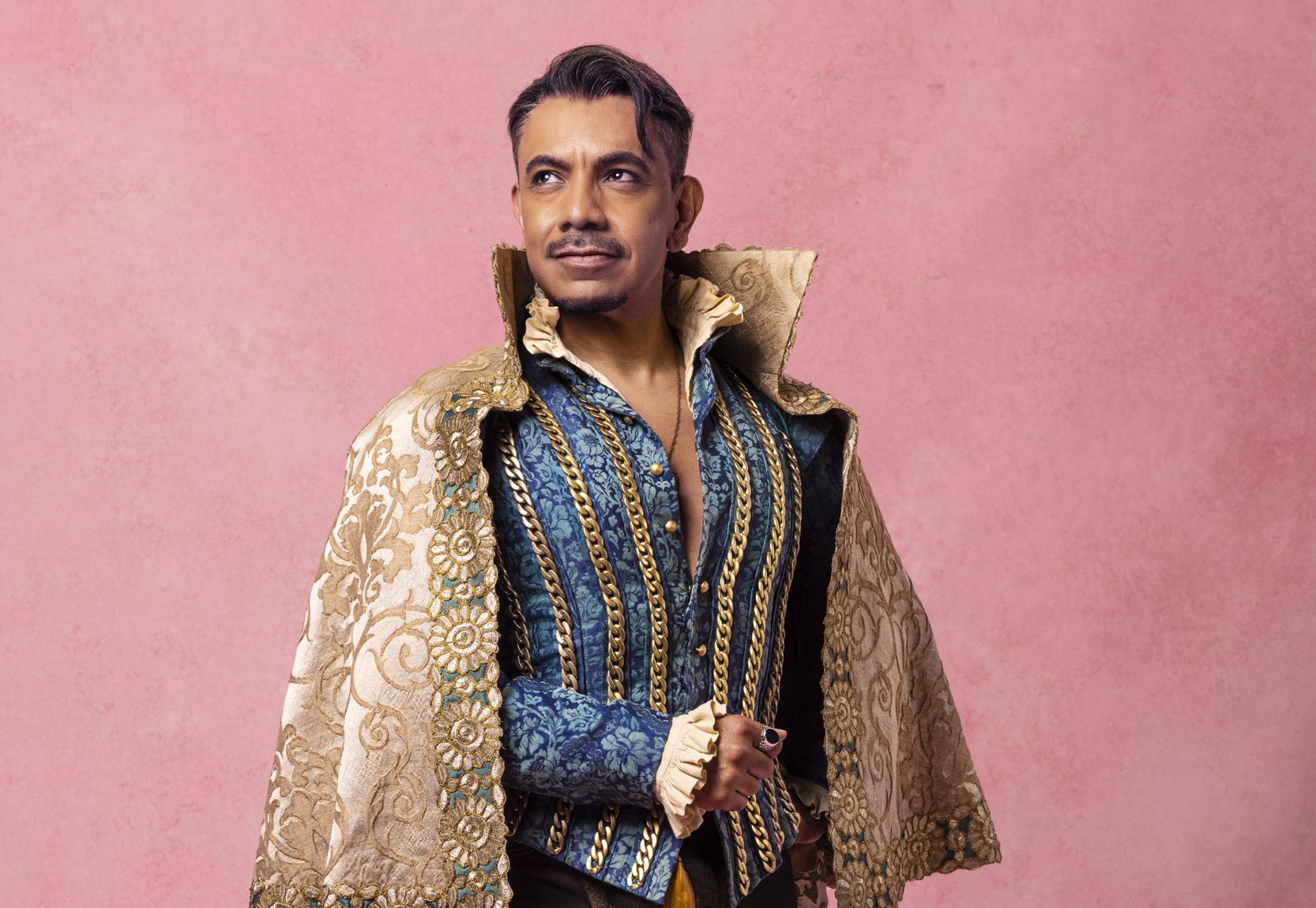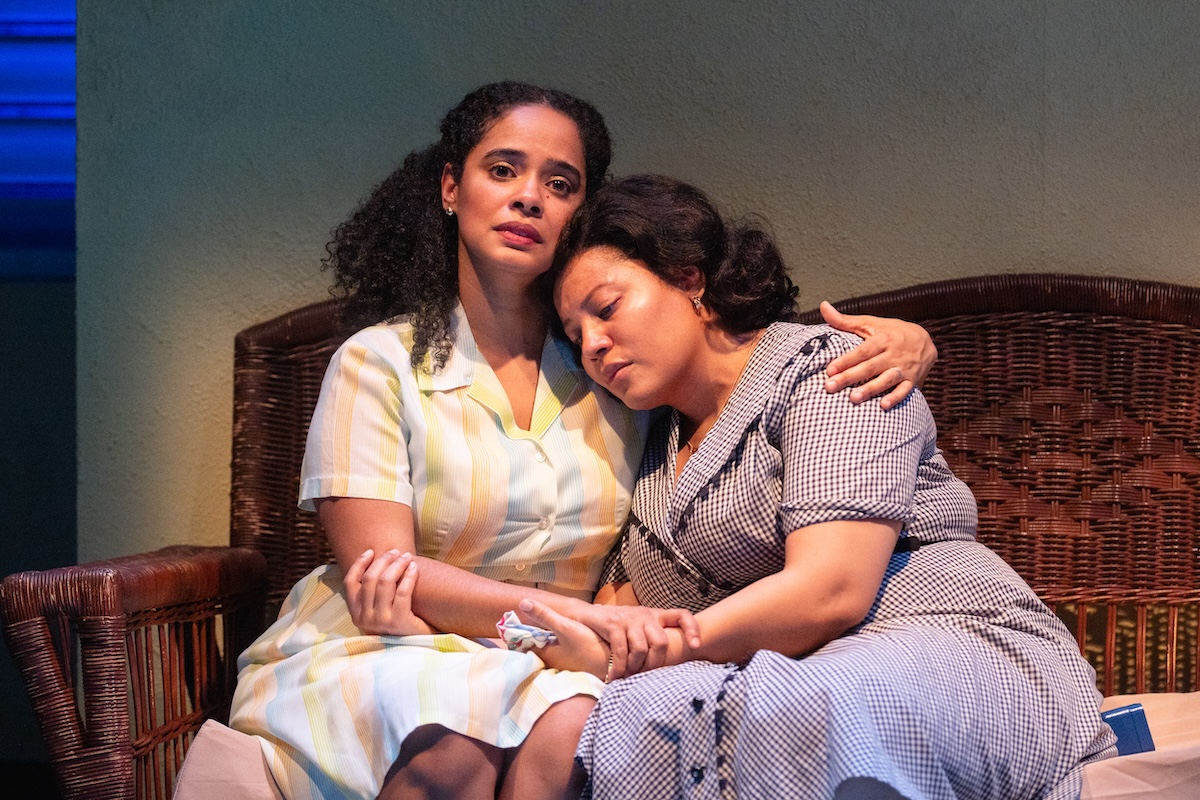No Exit, Happy Hour, and Sex Ed

NO EXIT
In this age of realism and cynicism, few people can stomach pieces dealing with the higher themes of heaven and hell. The self-absorbed, “Me Generation” philosophy prohibits most people today from appreciating pieces that confront powers greater than those of a human being. Almost 60 years ago, a French writer who fully understood this cynicism created a world in which hell is not fire and torture but, ultimately, other people. Jean-Paul Sartre’s existentialist masterpiece No Exit, first produced in Paris in 1944, still rings with disturbing truth.
Rodney Hakim’s production of No Exit, now playing at the New 42nd Street Theater as part of the Midtown International Theater Festival, does its best to do justice to Sartre’s brilliant work. Though the play is meant to be set in a drawing room decorated in Second Empire style, Hakim strips it down to a minimalist level, using only folding chairs, a wobbly black door, and a simple black mantelpiece.
No Exit shows us how three recently deceased people– Garcin, Inez, and Estelle, who had not known each while alive– become each other’s torturers. This is a difficult piece to stage, yet Hakim has chosen actors who get the job done. While Garcin is played too stagnantly at times, Frank Tangredi does have the booming voice fit for this stiff, practical character. Phyllis March brings an apt bluntness and sarcastic edge to Inez, although her attraction to Estelle, as played by Claudine Coffaro, is not entirely believable. Indeed, Coffaro is the weakest link in the cast. Though Estelle is supposed to be a vain, rich woman, Coffaro plays that vanity to an unbearable extreme, knocking us over the head with it. (One of the most crucial turning points in the play is Estelle’s realization that she has truly been erased from earth. Unfortunately, Coffaro treats this like an Erica Kane monologue, detracting from its power.)
To be fair, Coffaro is not a bad actress. Throughout the play, there are moments when we see her potential; for example, the quiet moment when Estelle realizes that she needs a mirror to exist. But Coffaro indulges in melodrama, as does the production in general. March and Tangredi also fall prey to histrionics at times–e.g., in the awkwardly blocked stabbing scene at the end of the play. Yet, despite the melodramatic fervor he has brought to the production, Hakim does a decent job of holding the piece together.
********************
HAPPY HOUR
The goal of experimental theater is to have a specific idea that you wish to communicate to an audience; the risk is that your point may not come across the way you intended. HIU-Shudan, an improvisational Japanese theater group performing in the Midtown International Theatre Festival, takes such a risk in its presentation of work titled Happy Hour.
Their first piece, “Audition,” is broken up into two sections that make up the first and final parts of this three-part show. The first section takes place at the very beginning of the show when the Director (Shiro Watanabe) and Producer (Eben Bull) announce that they will be auditioning people from the audience for HIU-Shudan. Four audience members come forward. We later discover that only one of the four is an actual audience member; all of the others, including the Director and Producer, are actually HIU-Shudan actors. All of this is sweet and embarrassing, but in a thought-provoking way: The actors reveal themselves to the audience, and we are meant to judge them. Hearing these earnest performers struggling to speak English, you understand how difficult it must be for a Japanese actor to audition in America.
The second section of this “Audition” piece, performed at the end of the show, is not as successful. We watch each actor trying to perfect his or her audition by rehearsing in his/her own space. We are asked to look inside the minds of these actors, to understand how often they practice and how huge their ambition can become while, for example, they are watching Robert DeNiro in Taxi Driver. This idea is intriguing, but the scene lasts a bit too long and the direction is clumsy. Also, the scene loses power when dreamy music begins to play and a disco ball starts to spin around.
The second piece, which is the centerpiece of Happy Hour, is called “Suitcase/Kaban” and is based on a story by Kobo Abe. Two old friends meet to talk about old times, and one of them slowly realizes that the other is changing because of an obsession over a suitcase his girlfriend left behind. It is never clarified what is in the suitcase or what the state of the relationship is, yet one can infer that the suitcase symbolizes the girlfriend’s inner thoughts, which she shields from her boyfriend. Once again, the idea is interesting, but the scene plays out in an unsatisfying manner.
“Suitcase/Kaban” is performed in English and Japanese, sequentially, and the use of both languages brings up questions about the quality of the translation. Seeing and hearing the piece in Japanese is like watching a mystery, yet the English version brings no real revelations; one could understand more of what was going on, but none of the information was dramatically satisfying enough to call for the repetition.
For the English version of the piece, one of the actors changes. Yosuke Takahashi, who appears in both versions, yells to replacement actor Motoki Kobayashi “You have to speak English!” when Kobayashi tries to speak Japanese to his friend. The moment is so poignant that one wishes for more of the same.
*******************

and John Houfe in Sex Ed
(Photo: Blanche Mackey)
SEX ED
Sex may be the one word that thrills and terrifies adults and children alike. Though it may be the most popular force in media, nothing scares the average person more than actually talking about sex. Suzanne Bachner explores the hilarious and frightening world of sexual discovery in a 1984 New York City private school in Sex Ed, now playing at the New 42nd Street Theater.
The trouble with writing about sex as a taboo subject is that everyone writes about sex as taboo subject. But Bachner puts a new spin on this approach. In a tightly structured piece, she views sex through the eyes of six characters–three adults and three children, played by only three actors. In scenes that are intercut, the adults give a lecture on sexual education while the students begin a dangerous game of sexual exploration. Each actor plays both an adult and a student, with the older characters providing an interesting contrast to their 12 year-old counterparts: John Houfe plays the mischievous Stephen and the rigid Dr. Vice; Alex McCord is the flirtatious Pammy and the blunt Ms. Guddell; Danny Wiseman is the timid Evan (who’s on the verge of discovering that he’s gay) and the sunny Shep Allen.
Although the situations and dialogue come across as a bit trite at times, Bachner is a talented writer and director. She understands the little moments that strengthen a character. For example, when Dr. Vice describes the male sexual organs, he continually stutters over the word “scrotum.” And, in the scene between Stephen and Evan, both boys seem aware that Evan’s feelings for Stephen are deeper than those of a best friend.
One of Sex Ed‘s greatest strengths is a solid group of performers; this cast is talented and entertaining. Each actor makes each moment unique and individual. The only fault of the production is the randomness of its location and time. Although the pounding ’80s music heard during transitions between scenes is quite enjoyable and adds to the pace of the piece, the play seems more late ’90s than ’80s, in both its language and its situations. Also, what begins as a comedy turns dark a little too quickly at the end; one wonders what would have happened if the play had more than 45 minutes in which to develop. But it is a credit to Bachner and her talented cast that the piece leaves us wanting more.












